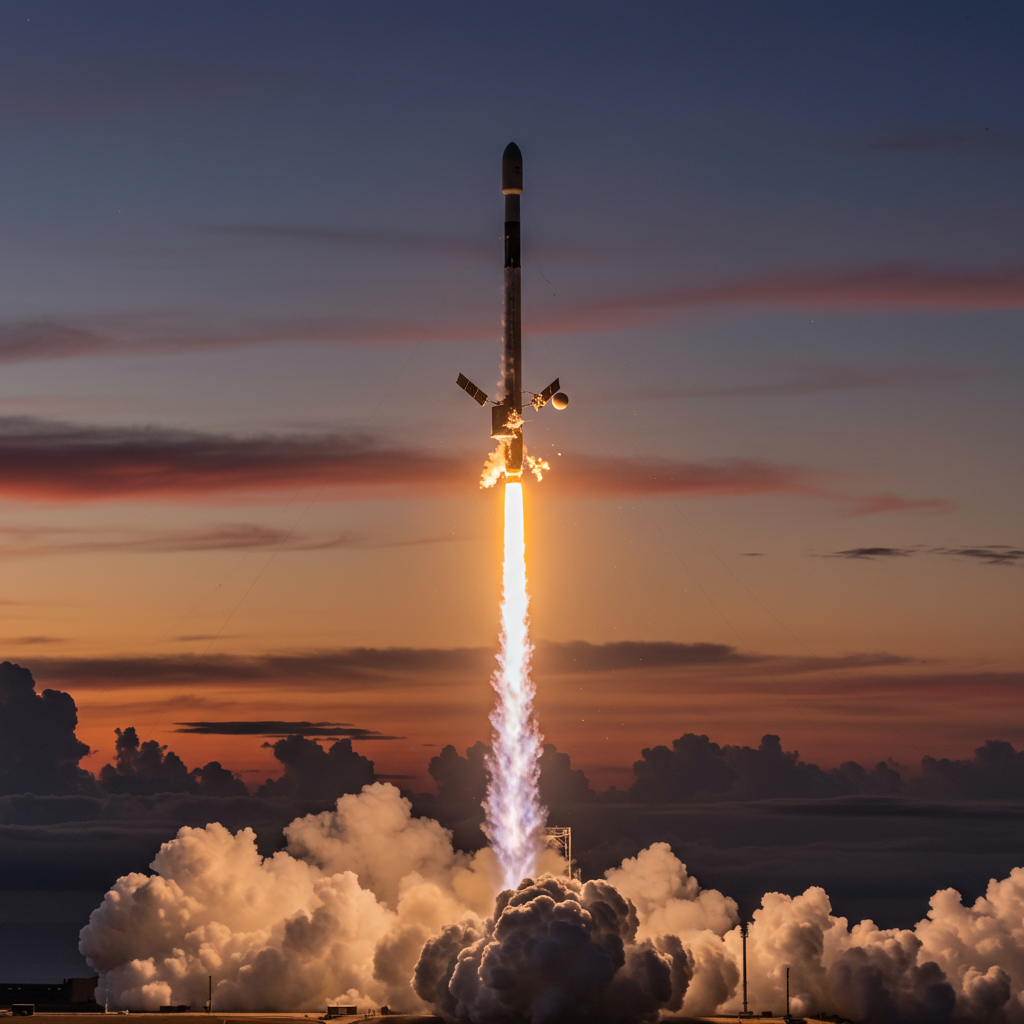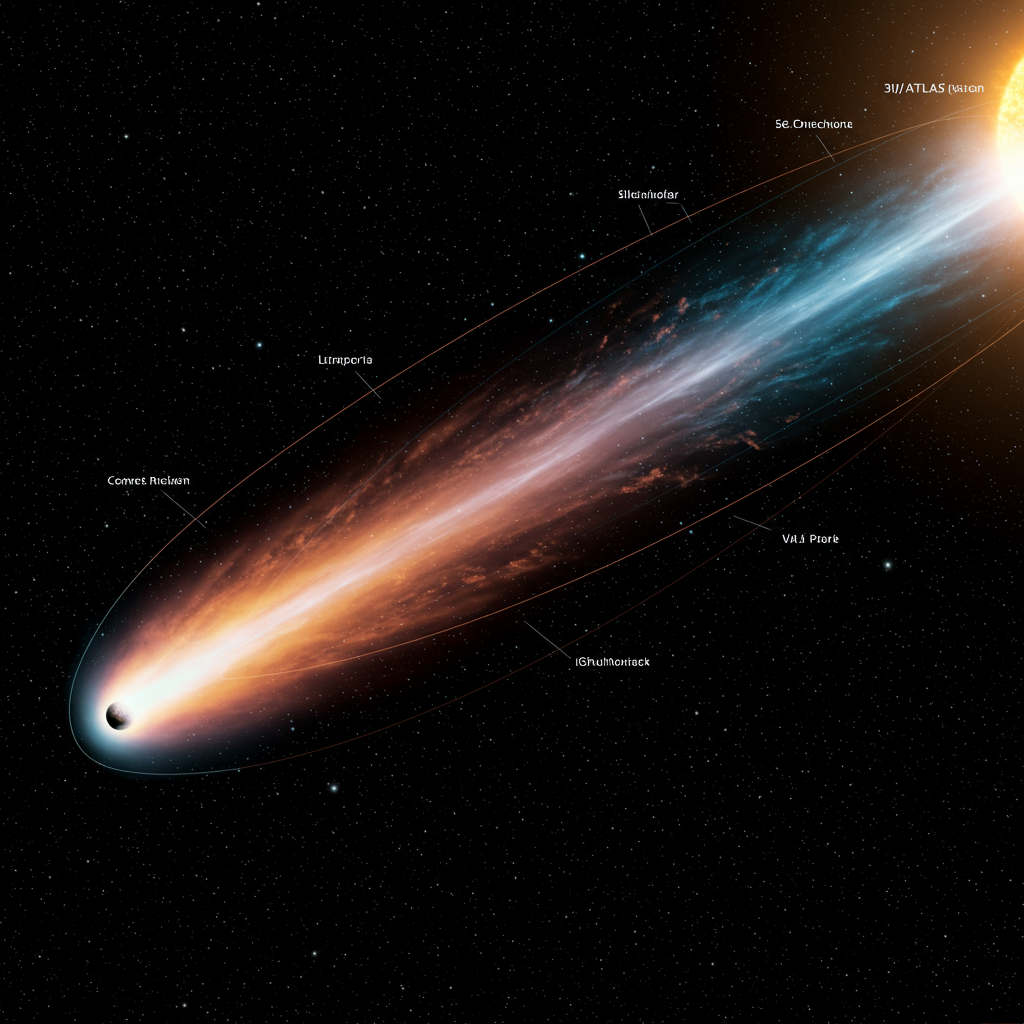SpaceX Transporter 14 Mission Carries Diverse Payloads, Including Unique Space Memorials
SpaceX has successfully completed another major rideshare mission, launching a diverse manifest of payloads to low Earth orbit (LEO). The Transporter 14 mission, which lifted off aboard a Falcon 9 rocket, included satellites for Earth observation and technology demonstrations, alongside a particularly unique cargo: capsules containing human cremated remains and DNA.
The launch occurred on June 23, 2025, at 5:25 p.m. EDT (2125 GMT; 2:25 p.m. local California time) from Vandenberg Space Force Base in California. This mission carried a total of 70 payloads for a variety of commercial and institutional customers.
A Familiar Booster Returns Home
Following the successful liftoff, the Falcon 9’s reusable first stage performed a flawless landing. Approximately 8.5 minutes after launch, the booster touched down on the SpaceX drone ship “Of Course I Still Love You,” stationed in the Pacific Ocean.
This flight marked the 26th launch and landing for this specific Falcon 9 booster, showcasing SpaceX’s continued mastery of rocket reusability. This milestone brings the booster close to the company’s current reusability record of 28 flights. Meanwhile, the rocket’s upper stage continued its journey to LEO, tasked with deploying the 70 payloads over a nearly two-hour period beginning roughly 54 minutes after launch.
More Than Just Satellites: A Look at the Cargo
Transporter 14 carried a varied collection of spacecraft, including microsats, cubesats, and reentry capsules. Among the notable payloads were:
Earth Observation: Capella Space’s Capella-17, a synthetic aperture radar (SAR) satellite designed for advanced Earth imaging.
In-Space Operations: Starfish Space’s Otter Pup 2, which aims to achieve the first-ever commercial docking maneuver in LEO later this year.
- In-Space Manufacturing: The fourth reentry capsule for California-based Varda Space, a company pioneering manufacturing pharmaceuticals and other materials in space and returning them to Earth.
- www.space.com
- www.space.com
- www.inkl.com
- timesofindia.indiatimes.com
- www.indiatoday.in
A Journey to the Stars: The Space Memorial Mission
Perhaps the most distinctive payload on Transporter 14 was a mission dedicated to space memorials. Conducted in partnership with Houston-based space-burial company Celestis and European spacecraft firm The Exploration Company (TEC), this project, known as the “Perseverance Flight” and housed within TEC’s “Mission Possible” spacecraft, carried cremated remains and DNA samples for approximately 150 individuals from around the globe.
Celestis, a pioneer in this unique service since 1994, facilitated this mission as its 25th overall space flight and 12th “Earth Rise” mission. Unlike some space burials that travel to deep space, the participants on this flight will orbit Earth two or three times aboard the TEC capsule.
A key feature of this “Earth Rise” mission type is the planned recovery of the memorial capsules. Following their orbits, the Mission Possible capsule is designed to perform a controlled reentry and splashdown in the Pacific Ocean. Recovery teams will then retrieve the capsules, which will be returned to families as tangible mementos of their loved ones’ journey to space.
Motivations for choosing a space burial vary, from honoring a passion for science and space exploration to creating a lasting legacy among the stars. Among the participants on this mission is the DNA of three-year-old Matteo Barth, who becomes the youngest German and European to send his biological material into orbit, symbolically joining his late grandfather, a space enthusiast.
For The Exploration Company, this mission marks its second demonstrator flight and the first time its spacecraft has carried customer payloads, serving as a precursor to its planned Nyx Earth orbital vehicle intended for future missions, potentially including docking with the International Space Station around 2028.
Part of a Growing Rideshare Program
Transporter 14 is the 14th mission in SpaceX’s dedicated rideshare program, which began in January 2021 with Transporter 1, a mission that set a record by launching 143 satellites on a single rocket. SpaceX also operates a complementary rideshare program called Bandwagon.
The successful launch of Transporter 14 underscores the increasing accessibility and diversification of space, enabling everything from cutting-edge scientific and commercial endeavors to deeply personal memorial journeys beyond Earth.




